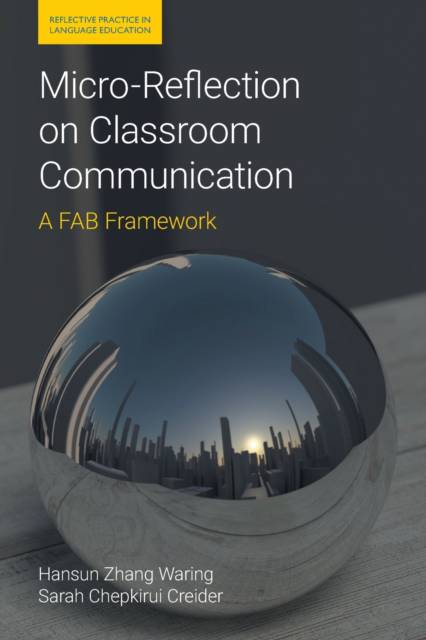
- Afhalen na 1 uur in een winkel met voorraad
- Gratis thuislevering in België vanaf € 30
- Ruim aanbod met 7 miljoen producten
- Afhalen na 1 uur in een winkel met voorraad
- Gratis thuislevering in België vanaf € 30
- Ruim aanbod met 7 miljoen producten
Zoeken
Micro-Reflection on Classroom Communication
A Fab Framework
Sarah Chepkirui Creider, Hansun Zhang Waring
€ 43,45
+ 86 punten
Omschrijving
Traditional concerns with classroom communication have centered on questions such as who talks more, whether the interaction is teacher-centered or student-centered, whether participation is restricted to a few or available to all, what kinds of questions teachers ask (display or referential), and what kinds of feedback they give. These indicators provide a simple and useful way of capturing classroom communication in distributional and categorical terms. Less attention has been devoted to observing and understanding the quality of this communication-whether it facilitates learning regardless of, for example, who talks more. Based on over a decade of fine-grained analysis of video-recorded ESL classroom interaction, this book offers one way of seeing and gauging the quality of classroom communication beyond distributions and categories. In particular, by parsing detailed transcripts of actual classroom interaction, it invites reflective conversations on how three principles of skillful classroom communication may be practiced in the micro-moments of classroom interaction: (1) fostering an inviting classroom environment, (2) attending to student voices, and (3) balancing competing demands (FAB). Attention to the moment-bymoment complexity of the classroom also allows teachers to learn and practice the skill of noticing, the first step in an iterative cycle of noticing, reflecting, and practicing. That is, along with reflecting on what happened in a classroom, teachers must also learn to notice what is happening in the moment. The goal is to cultivate a mentality of micro-reflection-one that sensitizes teachers to the consequentiality of every move they make as they make them in the simultaneity and sequentiality of second-by-second classroom interaction.
Specificaties
Betrokkenen
- Auteur(s):
- Uitgeverij:
Inhoud
- Aantal bladzijden:
- 224
- Taal:
- Engels
- Reeks:
Eigenschappen
- Productcode (EAN):
- 9781781797365
- Verschijningsdatum:
- 20/02/2021
- Uitvoering:
- Paperback
- Formaat:
- Trade paperback (VS)
- Afmetingen:
- 152 mm x 231 mm
- Gewicht:
- 226 g

Alleen bij Standaard Boekhandel
+ 86 punten op je klantenkaart van Standaard Boekhandel
Beoordelingen
We publiceren alleen reviews die voldoen aan de voorwaarden voor reviews. Bekijk onze voorwaarden voor reviews.











